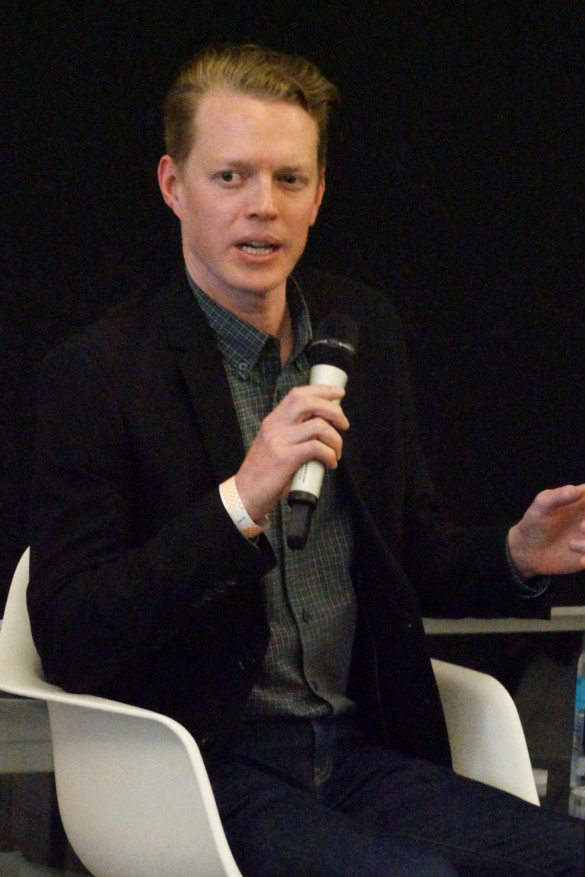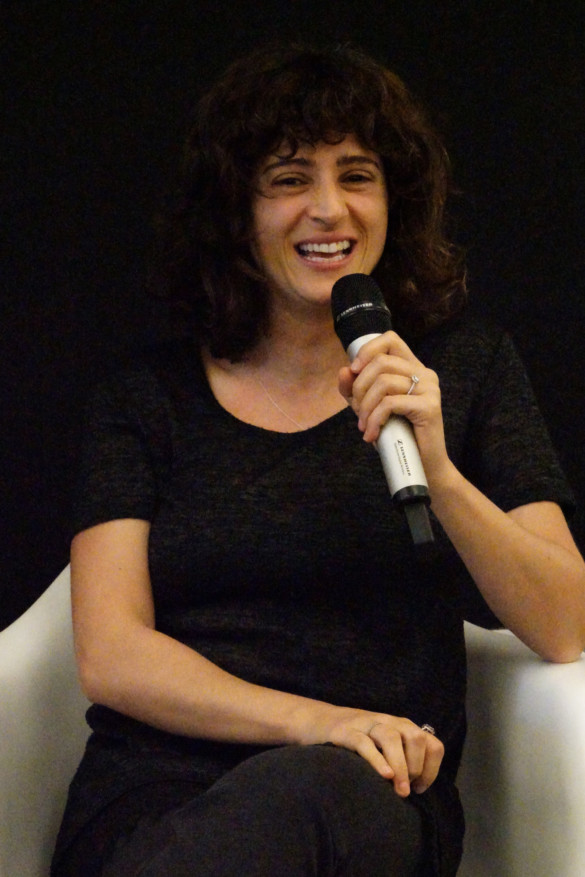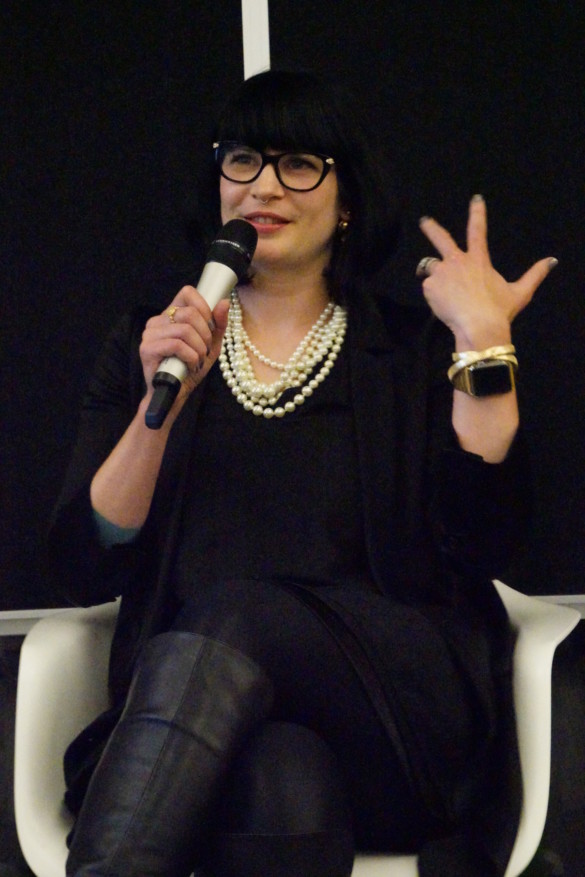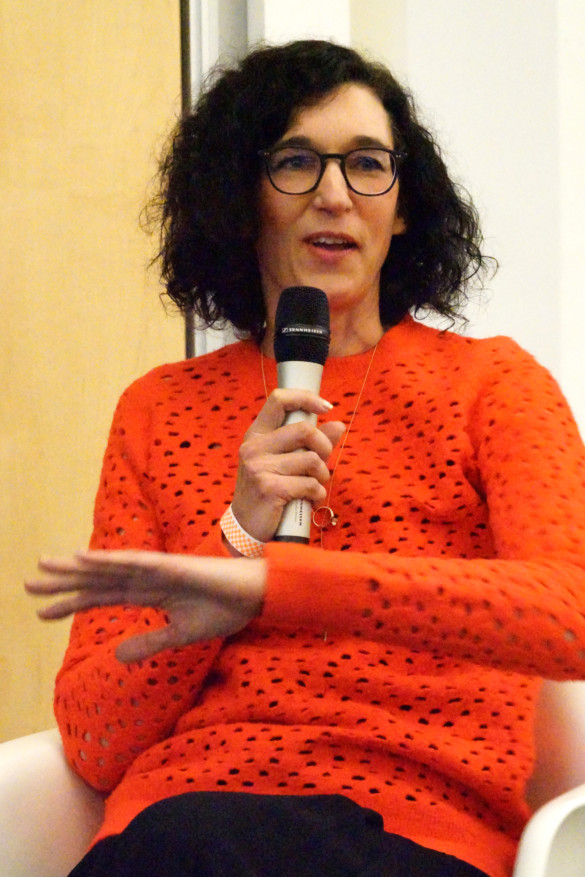The San Francisco Chapter of the American Institute of Graphic Arts (AIGA) recently hosted the latest event in its Design//Work series and assembled a panel of industry veterans and design world innovators to speak about the design careers of the future. Two of the four featured panelists, Christopher Morlan and Ravit Bennier Cohen, are instructors for the School of Graphic Design (GR) at Academy of Art University.
These design thought leaders are senior designers at Facebook, Adobe, Unity and Oracle. Attendees got to pose questions and hear designers’ unique perspectives on a wide range of topics including the role of tech knowledge in a designer’s toolbox and changing expectations of design job responsibilities, to name a few.
Morlan, an alumnus from the Academy himself, is now a creative director for Oracle. He has taught at the Academy since 2006, although he had years of design work under his belt before studying at the Academy. Early on in the evening, moderator Amy Stellhorn asked panelists how the accelerating development of technologies would affect the role of the designers, a question that elicited many contesting strong opinions.
“The problems to solve are going to be different, but the discipline and the thought process that informs design decisions, that is a foundation. Even if the problems of the world and the problems being designed for are different, the underlying approaches that designers take, those are going to be relevant,” Morlan said. “When we start looking at augmented reality and virtual reality, we’ll have to look at our flat windows and reexamine them in 3-D space. These are futuristic problems that I think designers are uniquely suited to solve.”
Cohen is a new instructor at the Academy and a product designer at Facebook. She is a world traveler and former business owner. “I look at design from the perspective of someone who has traveled and seen lots of different cultures. In the U.S., I see the individualism,” Cohen said. “We’re taught that in order to succeed in life we have to compete and be measured for success. My view and philosophy is how can we step outside of that and go back to measuring success by how we achieve together as a group. How can we work towards the mission together.”
Many Academy students attended the event to hear firsthand about the changes and trends affecting the design world. Briana Van Koll is a fourth-year GR student and works part-time for Airbnb.
“I was really curious to hear how veterans of design have been successful changing with the times. The panel had a lot of variety of opinion. I think about these things constantly because there’s a huge part of graphic design that’s mostly print,” Van Koll said. “Not that that’s going to die out, but I’m gearing more towards the side of designers that think the core skills of what a designer is [are] going to change. Although I think the core foundation of what designers are is storytellers. I don’t think that’s going to change.”
While the panelists’ opinions differed on what form change would take, the consensus was clear: Change is coming. Furthermore, this isn’t a bad thing. Morlan said, “Design is a fundamental problem.” But he meant that solving these problems is the mandate of a designer. For students concerned about the future of employment for designers, Cohen shared, “In the world where AI tools are going to replace a lot of things that human beings are required for, if one thing is going to stay very strong, it’s going to be the skill of creativity.”
All photos by Bob Toy.



